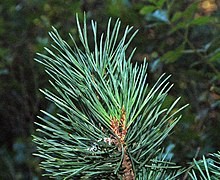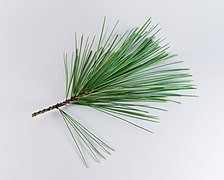Christmas tree identification for kids: Part 1
All Christmas trees are not created equally, you can learn to identify Christmas trees with a few easy tips.

Michigan ranks third in the nation for Christmas tree production. With so many trees growing in our state, Michiganders have a great selection of fresh trees to pick from when selecting their Christmas tree each year. Let’s take a closer look at some of those trees and how you can turn your trip to the tree farm or lot into a learning adventure.
Like most trees, evergreen trees have leaves, but we refer to their leaves as needles. We call them needles for a few very good reasons: they are shaped like needles and some, but not all, of them are very sharp! For example, the Colorado blue spruce has very sharp needles, while other trees like the white pine or Douglas fir have softer needles. While all Christmas trees are not created equally, you can learn to identify Christmas trees with a few easy tips.
For younger kids, keep it simple; they can learn that the trees not only have soft or poky needles with different shapes, but evergreen trees also have different aromas when you break or crush their needles. Pick off a few needles from the bottom of a few trees, break them in half and see if you can smell different aromas and identify different shapes.
By using the clues in this article and learning a few characteristics, older kids can have a friendly competition during their identification adventure. Bring a thermos of hot chocolate, enjoy the fresh air and learn some plant science while finding the perfect Christmas tree for your holiday celebrations!
Tree identification
It is easy to tell pine trees from other species of evergreen trees. Pine trees grow their needles in bundles or clusters called fascicles. When you pull off a few needles, you will see whether they come off in clusters. If the needles are attached directly to the stem as single needles, they are not pine trees.
The most common pines found on a Christmas tree farm in Michigan are Scots pine, also known as Scotch pine and white pines. Here are some clues to identify these two popular Christmas trees.
Scots pine or Pinus sylvestris
Scotch pines have needles in fascicles of two. The needles are one to three inches long and are twisted. They also have a very nice bluish color, as well as a nice evergreen aroma. The trunk of the Scots pine tree has orangish bark. Scotch pines are the most popular Christmas tree in the United States.

White pine or Pinus strobus
Needles of the white pine grow in fascicles of five. Their needles have a soft texture and are very flexible. The trees often have a wispy look. The needles are 2.5 to five inches long. White pine needles have very little aroma. The white pine is the state tree of Michigan.

Ready to continue your tree identification adventure? Read the next Michigan State University Extension article in this series, Part 2!
If you are looking for more information on selecting the perfect Christmas tree or just want to learn more, check out the following MSU Extension articles:



 Print
Print Email
Email





